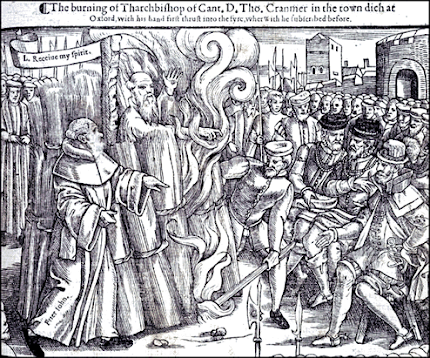"Dead bones cannot believe; but when clothed with flesh they live,
and they live a life of faith." -- Gordon H. Clark
[The following quote is from, What Is the Christian Life? by Gordon H. Clark. This is an e-book available at the Trinity Foundation website.]
2. Conversion and Repentance
Since the term sanctification commonly
refers to the life-long battle against sin, it is not usual to include
regeneration in the concept. Regeneration initiates the Christian life,
resurrecting the dry bones and clothing them with flesh – something only
God can do – but the first conscious human activity in this new life is faith. Faith, human activity as it is, is still a gift from God.
This activity, or its first moments, may be called conversion. The
previous state of mind is replaced by belief in the atoning death of
Christ. The man consciously changes his mind – for repentance is a change of mind – and turns from his old thinking toward the Savior.
First Peter 2:25 reports concerning his addressees, who had been
previously straying like lost sheep, that they had now returned to the
Shepherd and Bishop of their souls. Acts 11:21 is less flowery, but more
exact: “A great number believed and turned to the Lord.” In theological
language this turning is called conversion. The German pastor of the
Presbyterian Church at 19th and Susquehanna in Philadelphia, back in the
1920s, in the Schlussversammlung of an evangelistic series,
dramatically illustrated it by executing an about face in the pulpit as
he said, “Bekehren ist umkehren.”
If, now, one wishes to examine what is simultaneous, or what the logical relations are, one could say that repentance itself more commonly connected with aversion from sin than with belief in the Trinity, is an act of and a part of faith. Believing is indeed an act of the human self, caused by God to be sure, and totally impossible except for regeneration and God’s gift; but it is nonetheless a human volition. It is the first act in a Christian life. Dead bones cannot believe; but when clothed with flesh they live, and they live a life of faith. By means of this volition God justifies the sinner on the ground of Christ’s merits. This judicial pronouncement inevitably, if some people do not care to say automatically, sets in motion the life-long process of sanctification. The purpose of justification, or at least one of the purposes, and the immediate one, is to produce sanctification. The earliest stage of this is conversion, so early that it might be identified with the first act of faith itself. Consider some of the Scriptural material, both from the Old Testament and from the New Testament. Psalm 19:7: The law of the Lord is perfect, converting the soul. Psalm 51:13: Then will I teach transgressors thy ways, and sinners shall be converted unto thee.
Gordon H. Clark (2013-03-04T05:00:00+00:00). What Is The Christian Life? (Kindle Locations 165-188). The Trinity Foundation. Kindle Edition.
If, now, one wishes to examine what is simultaneous, or what the logical relations are, one could say that repentance itself more commonly connected with aversion from sin than with belief in the Trinity, is an act of and a part of faith. Believing is indeed an act of the human self, caused by God to be sure, and totally impossible except for regeneration and God’s gift; but it is nonetheless a human volition. It is the first act in a Christian life. Dead bones cannot believe; but when clothed with flesh they live, and they live a life of faith. By means of this volition God justifies the sinner on the ground of Christ’s merits. This judicial pronouncement inevitably, if some people do not care to say automatically, sets in motion the life-long process of sanctification. The purpose of justification, or at least one of the purposes, and the immediate one, is to produce sanctification. The earliest stage of this is conversion, so early that it might be identified with the first act of faith itself. Consider some of the Scriptural material, both from the Old Testament and from the New Testament. Psalm 19:7: The law of the Lord is perfect, converting the soul. Psalm 51:13: Then will I teach transgressors thy ways, and sinners shall be converted unto thee.
Gordon H. Clark (2013-03-04T05:00:00+00:00). What Is The Christian Life? (Kindle Locations 165-188). The Trinity Foundation. Kindle Edition.




No comments:
Post a Comment